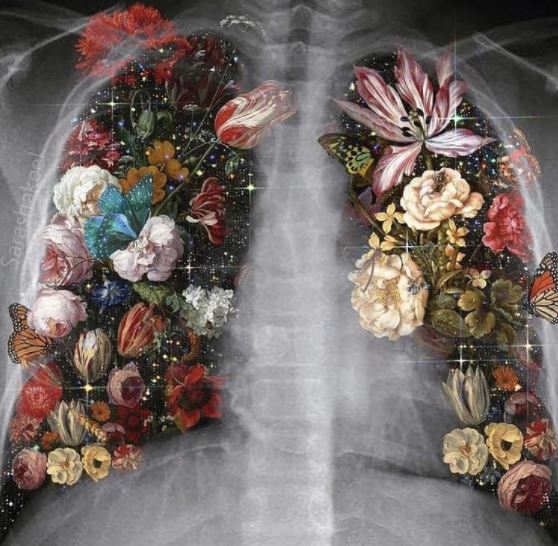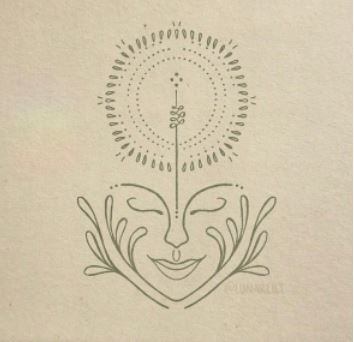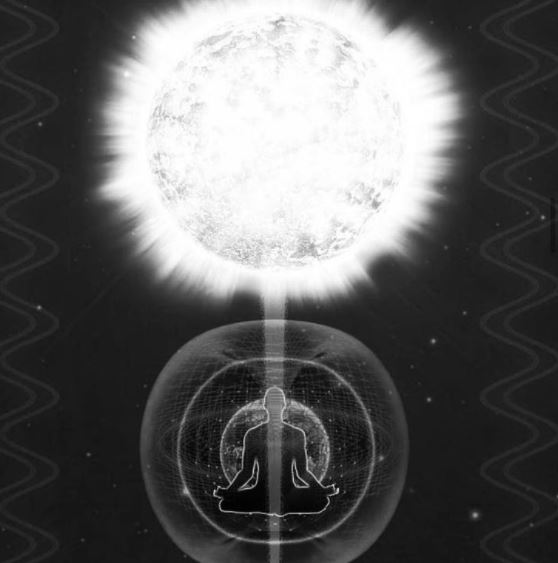Ancient humans believed the northern and southern lights were massive spirits in the sky, possibly originating the theory of dragons. The rainbows in the sky have generated much mythology throughout the ages, from the ancient Chinese who saw dragons in the sky to the Irish who invented leprechauns. In the book of Genesis, Noah sees a rainbow sent from Gd and sees a sign god’s promise to never flood the Earth again.
In the Himalayas, Tantric Buddhism emerged in the 7-12th centuries, called the Pala-period, and was fueled by cultural infusions from Hindu Tantra and Shakta, the Goddess-worshiping traditions. They believed in the rainbow body as a state of nirvana through the energetic system of the chakras, in which a rainbow is lit up along the spinal cord. The practices have similar concepts of serpent worship and energy movement as the Ancient Egyptians in the 2nd Century CE, who believed a snake lived at the pituitary gland, or third eye, or the seat of magic.
The chakra system works to move energy from the base, red chakra, to the top of the head and out through the purple chakra. Through the breath and visualization, the yogi sees prana, or lifeforce energy, moving through the channel of the spine like an uncoiling serpent, unlocking spiraling balls of energy at points along the body, in the pattern of a rainbow.
How to practice Chakra meditation: Begin to deepen your breath: inhales, exhales. Envision white light entering your mouth and blood stream as you inhale, and the dark waste from your system leaving as you exhale. Let your spine naturally straighten with each breath, or not, just be comfortable.
A note on color visioning- breathe deeply and think of a color. Let the blackness of your mind’s eye find the color, in your memory, or sunlight, or grass, or the ocean. Or Vegetables and fruits, or your mother’s dress. Anything that lets you feel the color.
Beginning at the root chakra, or the tip and base of your spinal cord where your tail might be connected to the matter beneath you. The root is a dark blood red. Breathe in through your nostrils and let the red air travel down to the root of your spine.
There may be a glowing orb here, it may circle one way or another like atoms charged, there may be nothing but your spine, see it, and send the red energy here.
Next move your attention to your waist, the top of your pelvis, where there is an orange chakra glowing, radiating, creativity through your body. Breathe in oranges and send it down to the belly.
Straighten, breathe deeply, stretch, allow newness into your body, and let staleness out.
Then move up to around your belly button and let in yellow here. The point is vibrating bright sunshine from your mind’s eye to the yellow chakra point at your belly.
Slowly, deeply, inject pure yellow into this point that controls all the excretory systems in your body. Feel the energy lifting from your red root, orange pelvis, and yellow stomach.
Next is the heart chakra, radiating in the middle of your breast plate, bright green. Fill the heart with nature, trees, grass, the smells, the feelings. This chakra allows you to love naturally. Allow green to enter your mind’s eye whenever you are seeking love.
Moving up the spinal cord, the 5th chakra is the vocal cords, in the middle of your throat, and control your communications. Breath blue- oceans, skies, blueberries, here to control and bring truth and power to your most powerful expression.
Moving up to your third eye, the place between the middle and the eyebrows, the crown chakra is purple. Here lies your intuition, higher thoughts, the junction of your mind and spirit. Breathe royal amethyst crown energy here.
Breathe deeply. Align. This is your moment to connect with yourself, your chi, the air, the planet, the universe.
When you are ready, and the chakras are glowing, breathe clear energy in, down through the front of your body, then into your root chakra, and up, seeing each color in a line, up through your charged spinal cord to the top of your head, where it streams out glowing white light to the everything.
Breathe in and through the white light until you are ready to return to nothing. To come out gently wiggle each finger and toe, then shake gently, and stretch. Reward yourself with a drink- water, tea, juice. Be gentle with yourself, your body is your temple.





